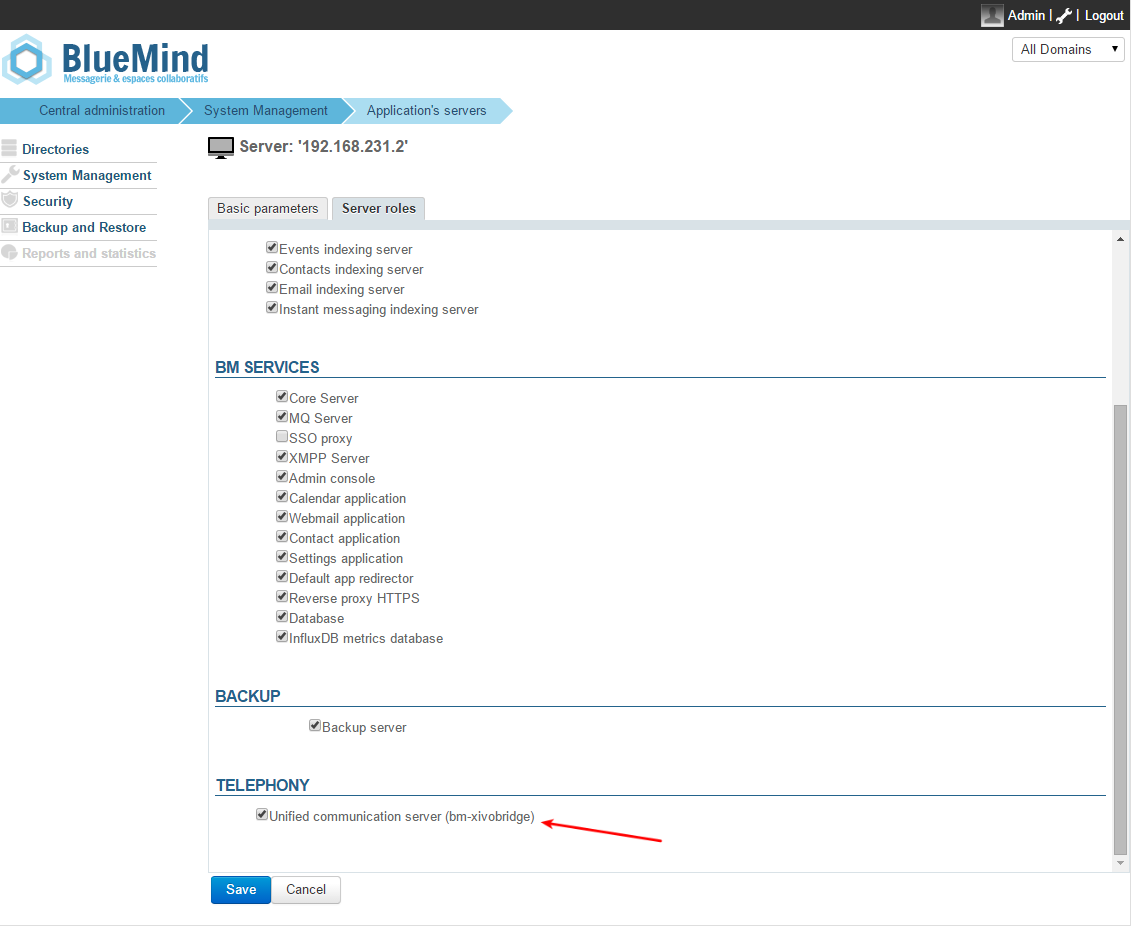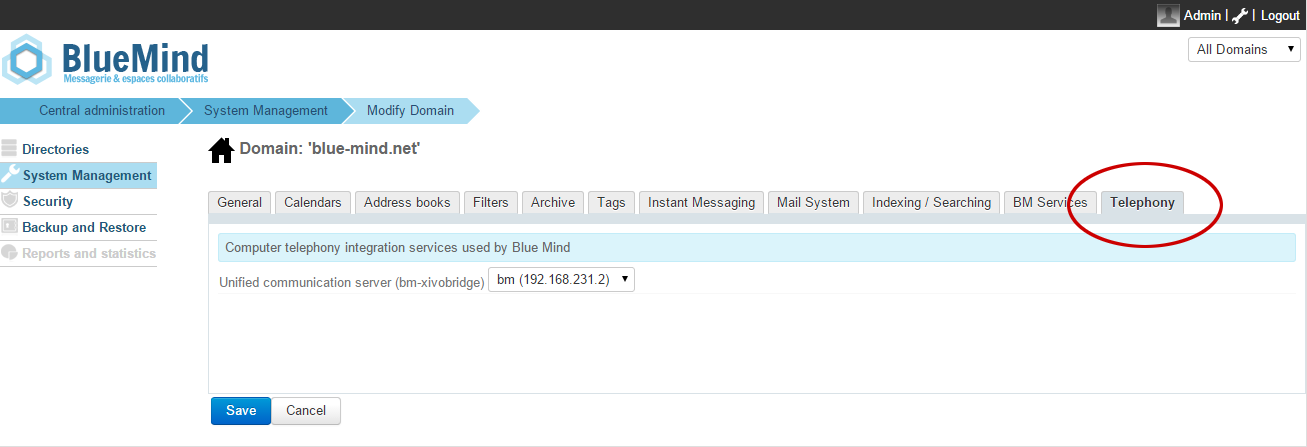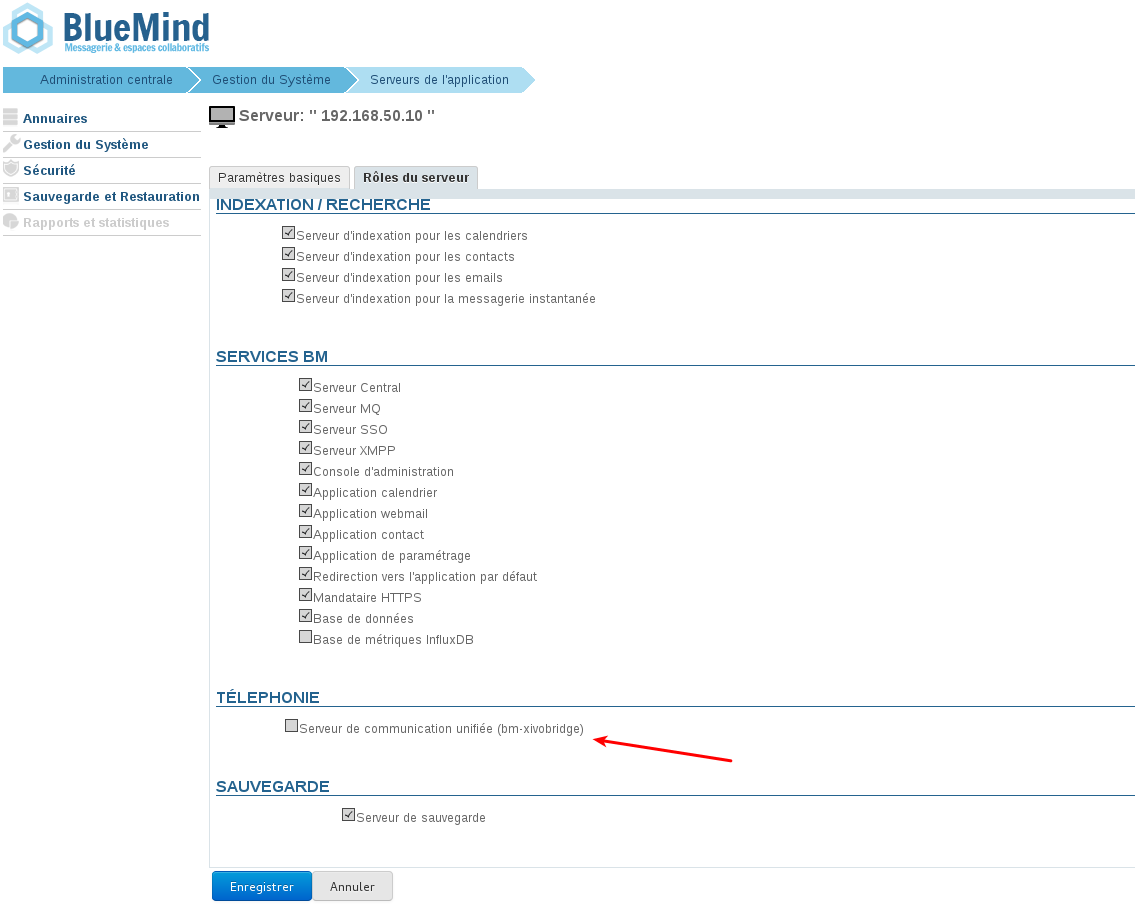Historique de la page
...
| Sv translation | ||||||||||||||||||||
|---|---|---|---|---|---|---|---|---|---|---|---|---|---|---|---|---|---|---|---|---|
| ||||||||||||||||||||
Configuring Xivo
Installing the XiVO plugin for BlueMindPrerequisiteThe XUC service must be installed on the Avencall server and set up on port 8090.
Procedure
Configuration in BlueMindAdding the CTI server role
Domain ConfigurationStill logged in as global admin0:
Running a configuration testYou can test this configuration by simulating a XIVO event using CURL:
with:
Supported statuses are:
Uses and integrationTo know more about using and integrating telephony in BlueMind, please see user's guide pages: |
| Sv translation | ||||||||||||||||||||
|---|---|---|---|---|---|---|---|---|---|---|---|---|---|---|---|---|---|---|---|---|
| ||||||||||||||||||||
Xivo konfigurieren
Installieren des Xivo-Plugins für BlueMindVoraussetzungDer XUC-Dienst muss auf der Avencall-Seite installiert und auf Port 8090 erreichbar sein. Erstellen Sie die Datei
Verfahren
Konfiguration in BlueMindCTI-Server-Rolle hinzugefügt
Domain-KonfigurationWeiterhin als globaler Administrator admin0 eingeloggt:
FunktionsprüfungDie korrekte Funktion kann getestet werden, indem ein XIVO-Ereignis über CURL simuliert wird:
mit:
Die unterstützten Zustände sind:
Verwendung und IntegrationWeitere Informationen über die Nutzung und Integration von Telefonie in BlueMind erhalten Sie in den entsprechenden Seiten des Benutzerhandbuchs: |




